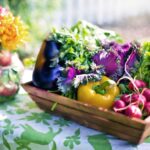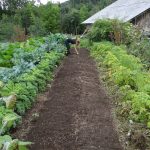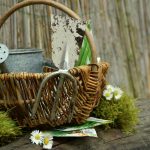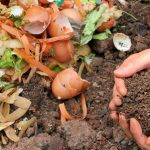Affiliate disclosure: As an Amazon Associate, we may earn commissions from qualifying purchases
My friends and relatives seem to think that I spend all of my spare time taking care of my garden because of how good it looks to them. In fact, the majority of people who do not garden are under the impression that gardening is difficult and time-consuming, and that it is best suited to retired people who have plenty of time on their hands. This is simply not true.
Maintaining a small garden is much easier than a medium-sized or large-sized garden, and as a woman in her forties, I can tell you that it can actually be a very enjoyable hobby. If you are tempted to start a small garden, then you have come to the right place.
Contents
Why do people believe gardening is difficult?
Personally, I believe those who don’t actually garden are the ones who think gardening is difficult. They see it as just another task to cross off their list of to-dos. That, in my opinion, is what sets gardeners apart from those who don’t. People who garden, however, find it very rewarding and do not view it as a chore.

How hard is it to maintain a small garden?
Maintaining a small garden is not that hard. Yes, it can be challenging at first, especially if you don’t have an idea of what you want to do with the garden. However, if you have a plan, you can divide it into more manageable sections and work on one section at a time.
Your plan should include a sketch of the garden and any beds, planters, pots, hanging baskets, and window boxes you will be using. Will you plant bulbs, seeds, annuals, perennials, or will you buy the plants you want?
Other things you might want to include in your plan are benches, arches, water features, etc. Additionally, you will need to make sure that you are equipped with all the necessary tools to put your plan into action.
All of this can seem overwhelming at first, but if you break it up into manageable pieces, it will be much simpler. Once you have the garden designed the way you want it, it should only take a few hours a week or even a month if you go with a low-maintenance garden.

What does gardening teach you?
Gardening has a lot to teach you if you pay attention. Modern manufacturing processes are making us forget how to garden and how important it is to grow our own food. Growing your own food is a great way to learn the value of gardening and how important it is to eat healthy, nutritious food.
As mentioned above, you don’t have to plant just flowers. You can also plant fruit and vegetables, herbs, and even salads. Don’t worry if you don’t know how to do it; you’ll figure it out as you go along. Of course you will make mistakes, but that’s how we learn best.
Throughout your growing journey, you will learn a great deal about agricultural production and plant life cycles. You will also learn how to cultivate plants using various techniques, including hydroponics.
Growing your own food isn’t just about what you put in your body; it’s also a great way to educate yourself on the importance of using organic fertilisers and compost and how damaging pesticides are to us, the environment and essential insect populations. Every time a new generation of children is born, all of these things are lost.
You don’t need to spend a fortune or use exotic or rare plants to have a lovely garden. You can plant native plants because they are adapted to the local climate and need less water and fertiliser to thrive. They are less susceptible to pests and diseases than non-native ones. Native plants can also make your garden look more natural and draw in a wider variety of birds, bugs, and butterflies.
Insects can live in the garden, and you don’t have to get rid of them all to be a good gardener. In fact, insects can serve as beneficial pest deterrents because they eat pests that eat crops. If you don’t use pesticides, natural insects will be more likely to thrive in your garden.
Gardening is a fantastic way to improve and maintain good mental health. It can reduce your stress levels, which will also improve your mood and boost your self-esteem. Exercise helps your body stay in balance; gardening can increase the amount of exercise you get daily, calming your mind and reconnecting you to nature.

What is your favourite part of gardening?
My favourite thing about gardening is getting my hands dirty, planting seeds, and waiting for the first plants to grow. The most exciting part of gardening is seeing how it changes over the course of the growing season, especially when the first insects, bees, and butterflies show up.
Going out into the garden first thing in the morning with a cup of tea and listening to the birds sing is one of my favourite ways to start the day. Spending time alone with a cup of tea and nature can do a lot for your mental and emotional health.
What are the three gardening tools you cannot do without?
When stocking up on gardening tools, it is important to consider not only the tasks that will be performed with each tool but also the length of time that each tool will be used. Cheap sets of garden tools are easy to find, but they might not last long if you use them all the time.
Spending a little bit more upfront on tools that will last a long time is preferable to continually having to buy the same tools over and over again because they are not adequate for the task at hand.
In this section, we will go over some essentials for gardening as well as the top three gardening tools you cannot do without.
Gloves
Gardening gloves are an important item to have on hand. Not only do they help to protect your hands from thorns and other prickly plants, but they also help to keep your hands clean. Claws are a feature of some gardening gloves, which help to break up the soil before planting.

Knee pads
Kneeling pads are an absolute necessity, especially if you don’t have raised beds. They come in handy when you need to sit or kneel down for an extended period of time while working in the garden. They also protect your clothing.

Shovel
A shovel is a must-have tool if you want to plant large plants, bushes, or trees. Hand tools won’t work for this kind of gardening.

Hoe
You will need a hoe to help loosen the soil and remove any unwanted weeds.

Watering can
The best way to water seedlings is with a watering can that has an attachment that has several holes. This will allow you to efficiently water a large number of seedlings at the same time. A watering can without the attachment is ideal for watering the roots directly. This avoids water sitting on the foliage, causing damage or disease growth.

Wheelbarrow
A wheelbarrow is an essential tool for any long-time gardener. It allows you to move things around with ease.

Dibber
Dibbers are useful tools for making holes in the ground in which to plant seedlings, bulbs, and seeds.

Our top three must-have tools
Pruning Shears
Pruning shears, also known as hand pruners or secateurs, are a special kind of scissors designed specifically for use on plants. They are powerful enough to prune even the toughest branches of trees and shrubs.

Hand Trowel
A hand trowel can be used for many gardening tasks, such as loosening up hard soil, digging small holes for plants, and pulling weeds. It can be used in flower beds, window boxes, and other small pots.

Garden fork
A garden fork is one of the most useful tools for getting new soil ready for planting. It can dig into the ground significantly deeper than a shovel can. It is also helpful to get rid of large plants and bushes, break up clumps of soil, and turn over compost heaps.

Best multi-use tool
Hori hori garden knife
The Hori Hori knife is a gardening tool with a strong wooden handle and a bevelled blade. The Hori Hori knife takes its name from the onomatopoeia for the sound of digging. Hori means “dig” in Japanese, and while it does that job exceptionally well, this knife has many other uses as well.
Removes and chops up weeds
You can quickly and easily remove any unwanted weeds from your garden with a Hori Hori knife, regardless of how large they may be. It also functions as a handy chopping tool for those pesky weeds that are a bit bigger in size.
Preparing the ground, planting and harvesting
You can use the Hori Hori knife to prepare the ground and make rows in the soil for planting seeds or bulbs like onions and garlic. It can also be used to remove stubborn seedlings from pots and to harvest crops from the ground.









